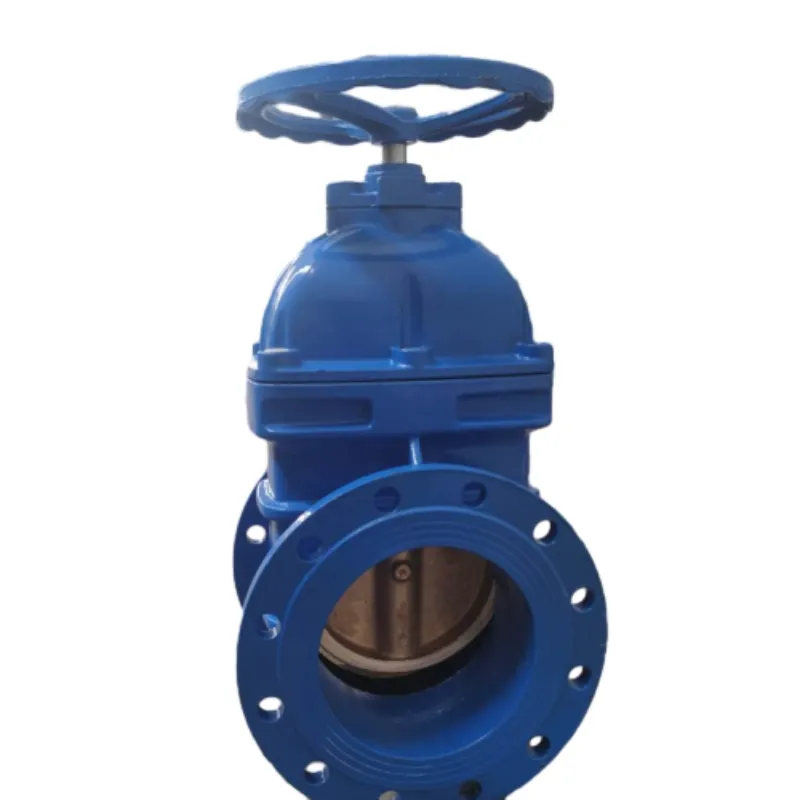2 月 . 13, 2025 19:13 Back to list
Electric soft seal gate valve
In the complex world of fluid dynamics, ensuring the precise control of flow is crucial for efficiency and safety. Non-return valves, often known as check valves, are vital components in various industries, including oil and gas, water treatment, and manufacturing, serving the purpose of allowing fluid to move in one direction while preventing backflow that could lead to contamination or system failure. This piece delves into the distinct types of non-return valves, offering expertise and guidance for choosing the right type that suits specific industrial needs.
Silent check valves, also known as axial flow check valves, offer an innovative solution by operating with a spring-loaded disc mechanism that prevents water hammer—a common issue causing pipeline damage due to sudden valve closure. These valves are essential in nuclear and steam applications where noise reduction and operational stability are crucial. However, installations must account for potential debris accumulation, which could hinder operational efficiency. Each non-return valve type caters to niche requirements defined by several factors, including system pressure, flow rate, and fluid characteristics. Selecting the most appropriate valve involves not only understanding these mechanical nuances but also considering material compatibility, environmental factors, and industry-specific standards. Consulting with engineering experts and leveraging authoritative resources can augment decision-making, ensuring the selection of a valve that offers longevity, performance reliability, and adherence to industry regulations. Contemporary trends in automation and smart technology are influencing valve design, pushing the boundaries of traditional systems. The introduction of remote monitoring and predictive maintenance features in newer valve models is reshaping expectations, offering data-driven insights that elevate operational efficiencies. Despite these technological advances, the foundational principles outlined herein remain central to the effective deployment of non-return valves. In conclusion, the diverse landscape of non-return valves provides a multitude of options, each with unique strengths and weaknesses. By navigating these choices with a clear understanding of system requirements and a commitment to expert consultation, industries can harness the full potential of these critical components. The careful selection and maintenance of the appropriate non-return valve hold the key to safeguarding system integrity, optimizing performance, and ultimately, driving the success of fluid management operations.


Silent check valves, also known as axial flow check valves, offer an innovative solution by operating with a spring-loaded disc mechanism that prevents water hammer—a common issue causing pipeline damage due to sudden valve closure. These valves are essential in nuclear and steam applications where noise reduction and operational stability are crucial. However, installations must account for potential debris accumulation, which could hinder operational efficiency. Each non-return valve type caters to niche requirements defined by several factors, including system pressure, flow rate, and fluid characteristics. Selecting the most appropriate valve involves not only understanding these mechanical nuances but also considering material compatibility, environmental factors, and industry-specific standards. Consulting with engineering experts and leveraging authoritative resources can augment decision-making, ensuring the selection of a valve that offers longevity, performance reliability, and adherence to industry regulations. Contemporary trends in automation and smart technology are influencing valve design, pushing the boundaries of traditional systems. The introduction of remote monitoring and predictive maintenance features in newer valve models is reshaping expectations, offering data-driven insights that elevate operational efficiencies. Despite these technological advances, the foundational principles outlined herein remain central to the effective deployment of non-return valves. In conclusion, the diverse landscape of non-return valves provides a multitude of options, each with unique strengths and weaknesses. By navigating these choices with a clear understanding of system requirements and a commitment to expert consultation, industries can harness the full potential of these critical components. The careful selection and maintenance of the appropriate non-return valve hold the key to safeguarding system integrity, optimizing performance, and ultimately, driving the success of fluid management operations.
Next:
Latest news
-
Y Type Strainers: A Comprehensive GuideNewsOct.18,2024
-
Understanding Water Valve Options for Your NeedsNewsOct.18,2024
-
Functions and TypesNewsOct.18,2024
-
An Essential Component for Fluid SystemsNewsOct.18,2024
-
Adjustment and ReplacementNewsOct.18,2024
-
Slow Closing Check Valves: A Key Component in Fluid SystemsNewsOct.08,2024
Related PRODUCTS









